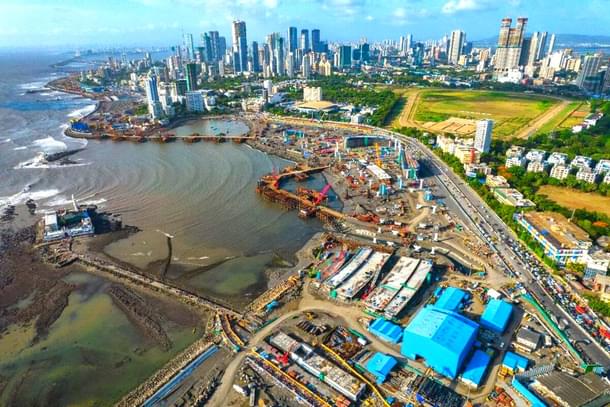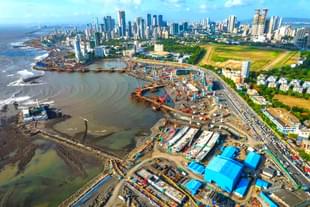Infrastructure
Mumbai Coastal Road Tunnels Leak Just Two Months After Launch
V Bhagya Subhashini
May 29, 2024, 05:32 PM | Updated 05:30 PM IST
Save & read from anywhere!
Bookmark stories for easy access on any device or the Swarajya app.


The newly-inaugurated Mumbai Coastal Road’s tunnels are already facing significant leaks, just two months after their launch.
Inaugurated by Maharashtra Chief Minister Eknath Shinde on 11 March, the Mumbai Coastal Road Project (MCRP) Phase 1 is a 10.58-kilometre high-speed corridor.
It connects Princess Street Flyover at Marine Drive in South Mumbai with the Bandra-Worli Sea Link (BWSL) at Worli through a network of arterial roads, underground tunnels, and traffic interchanges.
A highlight of the project is the twin tunnels beneath the Arabian Sea near Girgaon Chowpatty, making it India's first undersea tunnel system. These 2.07-kilometre twin tunnels originate from Girgaon, run beneath the Arabian Sea adjacent to Girgaon Chowpatty, and move northwards under Malabar Hill, ending at Priyadarshini Park.
However, on Monday evening (27 May), water was observed dripping from the tunnel roofs, with numerous dark spots on the walls where paint had chipped off due to dampness. These spots created drip lines down to the floor, leaving the surrounding areas visibly wet. Water had also pooled towards the Marine Drive end of the tunnel, about 100 metres from its exit.
Chief Engineer of the Coastal Road Project, Girish Nikam, disclosed that the leaks had been occurring since Sunday morning (26 May). "There is dampness in the wall that has been seeping through the construction joints. We do not yet know the exact cause. We will be performing some grouting to arrest the leak," Nikam stated, reports Deccan Herald.
Nikam noted that minor leaks were anticipated due to the presence of construction joints, but the precise cause needs further investigation. Efforts to stop the leaks began on 26 May, but the situation worsened by 27 May.
An official involved in the tunnel's construction mentioned that waterproofing was achieved using grouting and suggested that additional grouting might be required. However, he withheld final judgement until a thorough inspection could be carried out.
This issue follows an incident on 10 April, when tidal waters entered the Haji Ali Coastal Road’s pedestrian underpass during high tide. In response, the BMC announced measures to prevent water accumulation, including the construction of a hump at the mouth of the underpass and a 1,200 mm pipe hump parallel to the pathway from the promenade to the seaside.
V Bhagya Subhashini is a staff writer at Swarajya. She tracks infrastructure developments.





